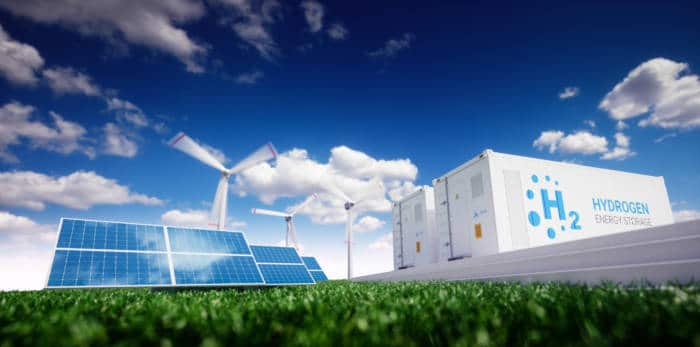Embracing renewables to fuel the future of road transport
Electric, natural gas and hydrogen vehicles will drive the transport industry’s future energy mix. But which is best suited for your operations?
On June 18, 2019

Electric, natural gas and hydrogen vehicles will drive the transport industry’s future energy mix. But which is best suited for your operations?
On June 18, 2019
The causes and effects of climate change need no introduction. Everyone knows that greenhouse gases are a major issue and that without quick and concerted action, the consequences could be devastating.
The logistics industry, through its massive use of oil, is one of the chief culprits. According to the International Transport Forum, 7% of global CO2 emissions originate from trade-related freight transport. As technology has advanced, renewable energy sources have become viable alternatives to diesel, offering a feasible and concrete way to make a positive impact.
But, which ones will fuel the future of your transport operations?
Unfortunately, or perhaps fortunately, there is no one-size-fits-all solution. That is why we have written a white paper on all things renewable. In it, you’ll learn the differences between electric, natural gas and hydrogen vehicles, and the niche market they each occupy. That way, you can make an informed and decision tailored to your fleet and operations.
Are you ready for a greener and cleaner future? If so, download our white paper now. Or if you want a quick summary, then keep on reading.
While saving our planet is obviously a great reason to switch to renewable energy, it is not the only benefit. In fact, there are several other strategic advantages.
Firstly, reputation. Environmental impact is an increasingly important factor in the buying decision process, with 66% of consumers willing to pay more for a product or a service if the company was committed to positive social and environmental change. Consequently, taking an active role in reducing your footprint could give you a significant edge over your competitors.
Secondly, price. The total cost of ownership of renewable energy vehicles is decreasing every day, with one estimate finding that annual fuel savings could reach $109 billion by 2035. Moreover, renewable energy is less price volatile than gas, facilitating procurement and budgeting. Last but not least, compliance. As international and national bodies introduce ever-stricter regulations to curb greenhouse gas emissions, you must ensure you don’t fall afoul of your obligations.

Unless some major, unforeseen breakthrough occurs in the next few years, it is safe to say that electric, hydrogen and natural gas vehicles will be the ones to drive the future energy mix. When deciding which to integrate into your fleet, the choice will depend on a variety of criteria: cost, range, size, refuelling time and infrastructure.
For short, urban journeys, electric vehicles seem to be the clear winners. They help combat both air and noise pollution in the city, while harnessing the potential of frequent stops through regenerative charging and benefitting from nearby charging infrastructure.
However, when it comes to long distances, the weight and size of batteries make them unsuitable. This is where natural gas and hydrogen fuel cells come into play.
As is stands, hydrogen technology is not mature enough to be economically viable, whereas several natural gas vehicles are already available on the market. Compared to diesel, the main advantages are fewer GHG emissions, fewer NOx emissions, lower TCO and quieter engines.
On the other hand, as the technology behind hydrogen fuel cells is refined, they should come to dominate the HGV format. In addition to the benefits offered by natural gas, fuel cells are light, scalable and quick to refuel. Some major companies have already placed orders for hydrogen trucks, such as Anheuser-Busch, and more will surely follow suit in the next decade.
Given the benefits of renewable energy vehicles, it may be easy to think that the switch is a no-brainer. However, some obstacles to widespread adoption remain.
The biggest of them is infrastructure. While it may be easy to commercialise electric, natural gas and hydrogen vehicles, building the infrastructure necessary to keep them fuelled is another task entirely. One of the reasons electric vehicles have become so popular so quickly is that installing electric charging stations is relatively simple. The same cannot be said for natural gas and hydrogen. For freight transport to embrace renewables, logistics providers will need proof that their fleets can be refuelled wherever, whenever. Until that happens, adoption will be limited.
On top of that, we must find sustainable ways of producing electricity, natural gas and hydrogen. The amounts we will need to produce to replace diesel are enormous, and without eco-friendly production, we will be unable to fully maximise the green potential of renewable energy vehicles.

Fuel is just one of many solutions for a durable, eco-friendlier transport industry. If we are to minimise its environmental impact, we must look at the supply chain as a whole. From warehouse and distribution pooling to truck platooning, sharing and collaboration between different links of the chain are key to streamlining the whole freight process.
Moreover, the last mile is still the most inefficient part of any good’s journey, accounting for 53% of delivery costs according to Honeywell. While drones have been lauded as the answer, they suffer from some major shortcomings. We need to therefore develop other ways to get goods to their final destination that satisfy customers and respect the planet.
If this taster has whetted your appetite for more, then download our white paper. It goes into further detail about each alternative fuel, providing facts, figures and expert opinions to help you make the right decision for your business.
Fill in the form